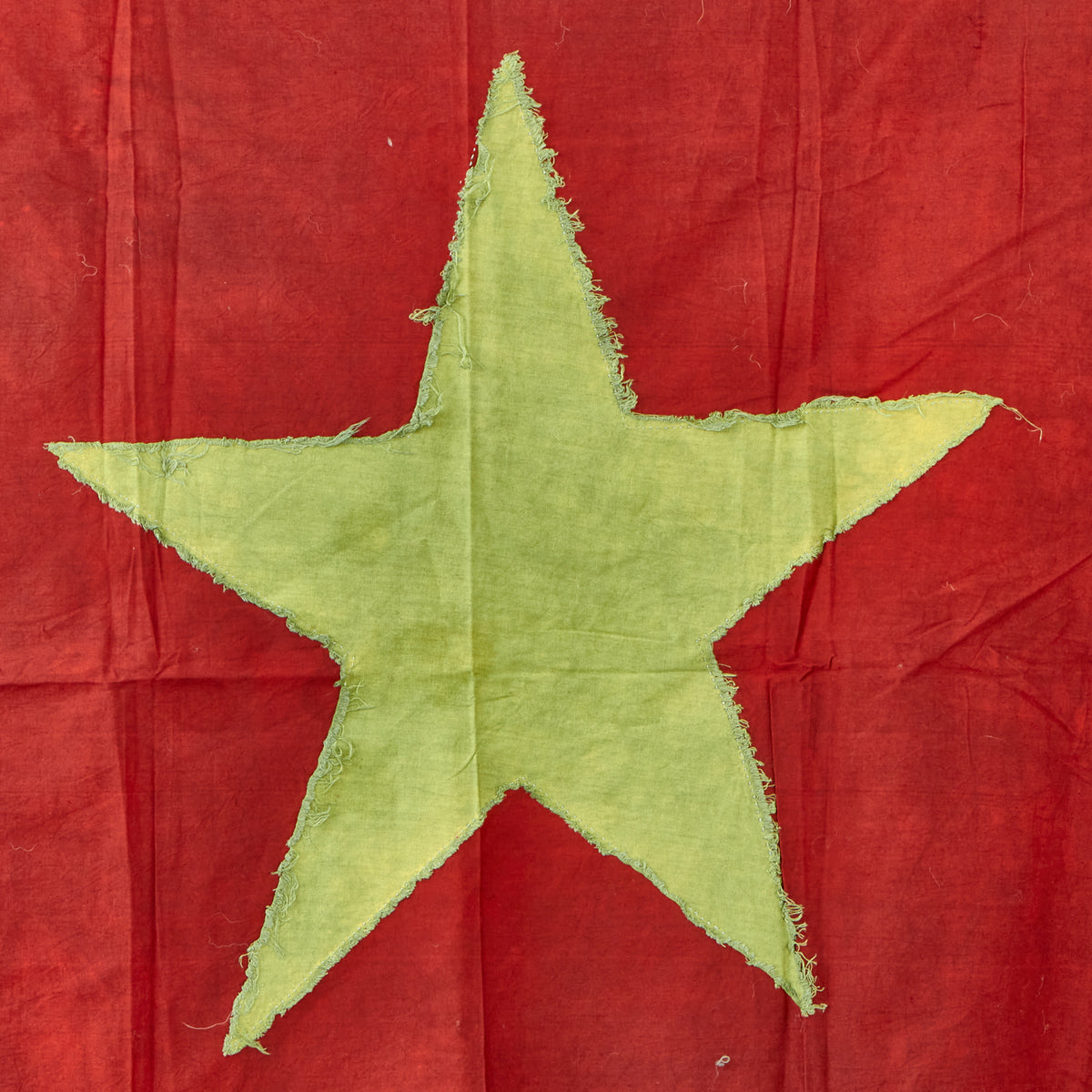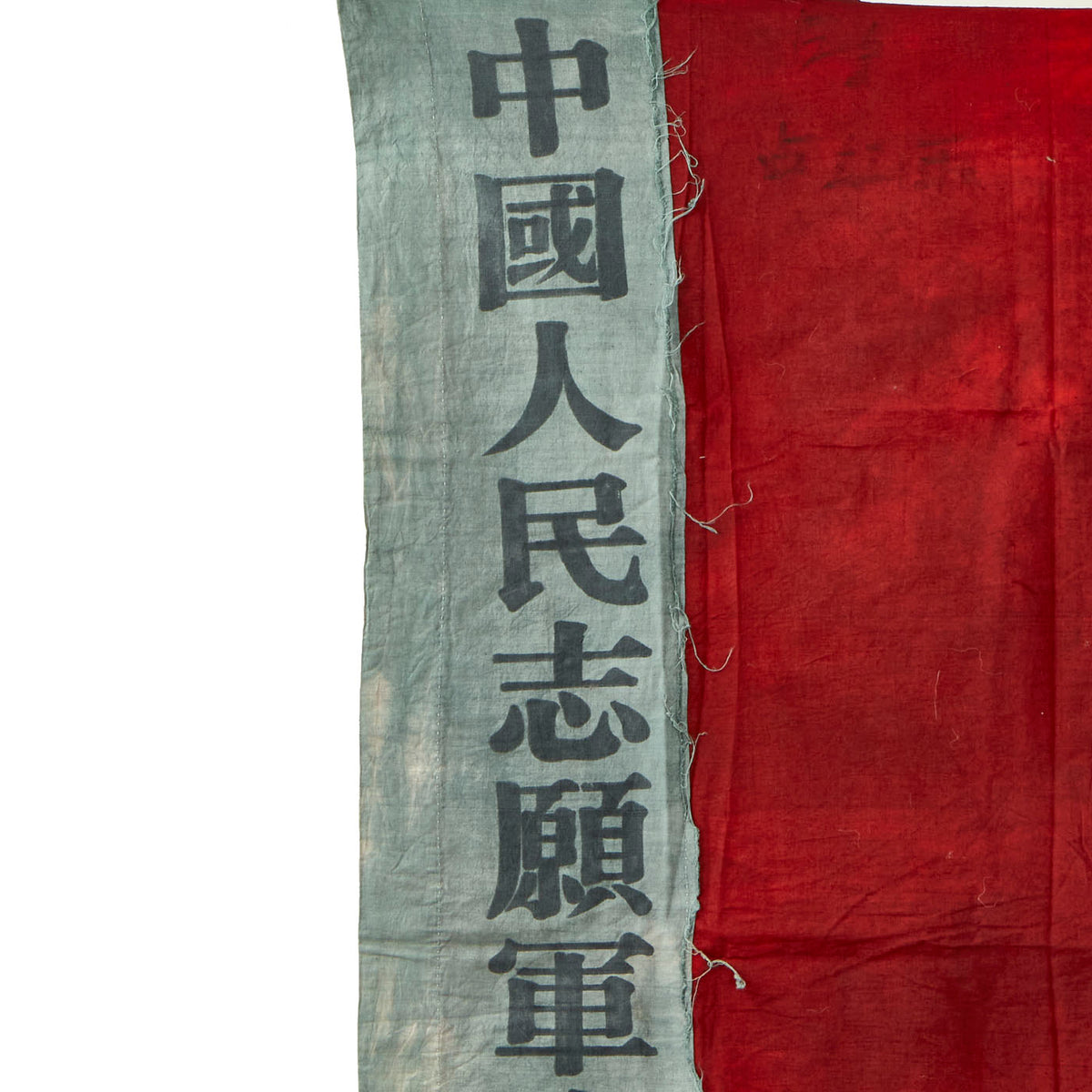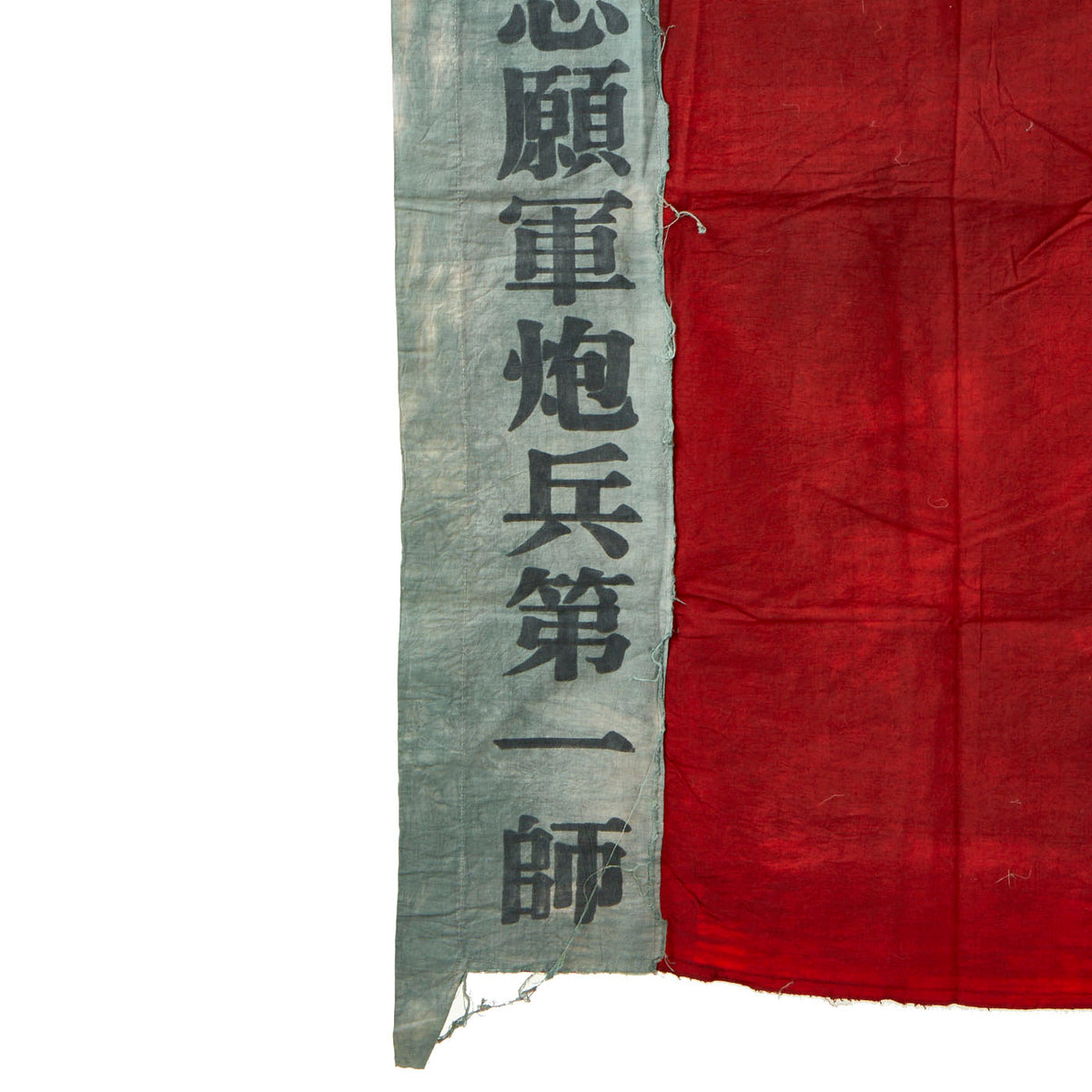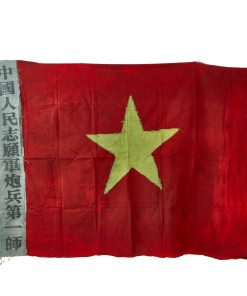Original China Korean War Era Chinese People’s Volunteer Army 1st Artillery Division Flag – 41” x 57” Original Items
$ 1.495,00 $ 373,75
Original Item: Only One Available. After the People’s Republic of China entered the Korean War in October 1950 by designating the People’s Liberation Army (PLA) North East Frontier Force as the People’s Volunteer Army (PVA), the PVA spent the next two years and nine months in combat operations and five years and three months in garrison duties. Its last elements did not leave Korea until as late as 1958.
During this period, China paid a huge price for its involvement in the Korean War. According to Chinese archives, about 73 percent of Chinese infantry forces, 67 percent of Chinese artillery forces, 100 percent of Chinese armored forces and 52 percent of Chinese air forces were deployed in Korea at one point or another, alongside 600,000 civilian laborers – in total more than three million civilian and military personnel. Out of those forces, around 152,000 were killed, 383,500 were wounded, 450,000 were hospitalized, 21,300 were captured and 4,000 were missing. Of the captured 14,190 defected to Taiwan after the ceasefire. China had also consumed 5.6 million tons of war materiel, 399 aircraft and 12,916 vehicles for its war efforts. About a third of the Chinese government’s annual budget was spent on the military between 1950–53, totaling 10 billion RMB by the war’s end. All in all, the Korean War was the largest foreign war in Chinese military history, despite the fact that no declaration of war ever existed between China and United Nations forces.
For many years, historians found it difficult to provide an accurate order of battle for Chinese troops in Korea because most of the information could only be obtained from prisoner interrogations or captured documents. The constant Chinese troop movements and the reattachment of units between different commands further added to the confusion.
By the 1980s, however, a large number of primary documents, memoirs and scholarly works on Chinese involvement in the Korean War began to appear in China, enabling historians to make a more comprehensive and accurate assessment of Chinese military operations during the war.
As the term “Corps” does not exist in Chinese military, the term “Army” (军) technically means “Corps” in PLA nomenclature, while the term “Army Group” (集团军 or 兵团) means “Army”. For example, the US X Corps is always referred to as the “US 10th Army” (美第10军) among Chinese sources.
This 41” x 57” Division flag is labeled on the hoist side with 中國人民志願軍炮兵第一師, identifying this flag as being for “The First Division of the Artillery of the Chinese People’s Volunteers”. The flag features an all red field with a white star in the center. As with most Chinese “Regimental’ or “Division” unit flags, the identifier is usually located on the left side of the flag and reads vertically on a white or light colored strip of cloth stitched on.
The overall condition is very nice but there are evident signs of being flown on the battlefield. There are some stains, fraying and holes present but these do not subtract from the beauty of this rather rare flag.
This is a wonderful example of a Chinese Division flag and it comes more than ready for further research and display!
In the initial phase (Nov 1950 ~ May 1951) of Chinese intervention, they didn’t have heavy artillery or tanks in Korea. The PLA did have some heavy artillery (US made and Japanese made) captured from KMT forces during the Chinese Civil War in their stocks. However, PLA (CPV) did not bring them into North Korea at this phase due to their poor transportation capability.
So, CPV used pure infantry tactics during the period. Their attacks always started with attacking the ROK Army that would invariably make them flee in panic. Then they exploited the holes left by the South Korean troops and threatened the sides and the back of the other UN troops and forced them to retreat. With these tactics, they were able to repel the UN troops down south but they could not cause high enough UN casualties.
After June 1951, when the front line was stable, CPV did strengthen their fire powers. They brought in Soviet made artillery and tanks and used them on the assaults of the UN positions or defense of their own positions.
By the end of 1951, the Soviet made artillery alone, the CPV had 36 152mm howitzers, 249 122mm howitzers, 297 76.2mm guns, 120 85mm AA guns, 60 76.2 AA guns. The CPV also had several US and Japanese made artillery.
By the end of the war, the CPV artillery forces had grown to a respectable level. In addition to the artillery at corps (army) level, there were also independent artillery divisions: 5 howitzer divisions, 2 anti-tank divisions, 2 rocket divisions, and 6 AA divisions. The 5 howitzer divisions had 556 howitzers and cannons at least.
Fast Shipping with Professional Packaging
Thanks to our longstanding association with UPS FedEx DHL, and other major international carriers, we are able to provide a range of shipping options. Our warehouse staff is expertly trained and will wrap your products according to our exact and precise specifications. Prior to shipping, your goods will be thoroughly examined and securely secured. We ship to thousands clients each day across multiple countries. This shows how we're dedicated to be the largest retailer on the internet. Warehouses and distribution centres can be located throughout Europe as well as the USA.
Note: Orders with more than one item will be assigned a processing date depending on the item.
Before shipping before shipping, we'll conduct a thorough inspection of the items you have ordered. Today, the majority of orders will be delivered within 48 hours. The delivery time will be between 3-7 days.
Returns
The stock is dynamic and we cannot completely manage it because multiple stakeholders are involved, including our factory and warehouse. So the actual stock may alter at any time. It's possible that you may not receive your order once the order has been made.
Our policy is valid for a period of 30 days. If you don't receive the product within 30 days, we are not able to issue a refund or an exchange.
You can only return an item if it is unused and in the same state as the day you received it. You must have the item in its original packaging.
Related products
Uncategorized
Uncategorized
Uncategorized
Uncategorized
Uncategorized
Uncategorized
Uncategorized
Uncategorized
Uncategorized
Uncategorized
Australian WWII Owen MK1 Machine Carbine SMG Custom Fabricated Replica with Sling Original Items
Uncategorized
Band of Brothers ORIGINAL GERMAN WWII Le. F.H. 18 10.5cm ARTILLERY PIECE Original Items
Uncategorized
Armoured Fighting Vehicles of the World: AFVs of World War One (Hardcover Book) New Made Items
Uncategorized
Uncategorized
Uncategorized
Uncategorized
Uncategorized
Uncategorized
Armored Burgonet Helmet & Polearm from Scottish Castle Leith Hall Circa 1700 Original Items












































































